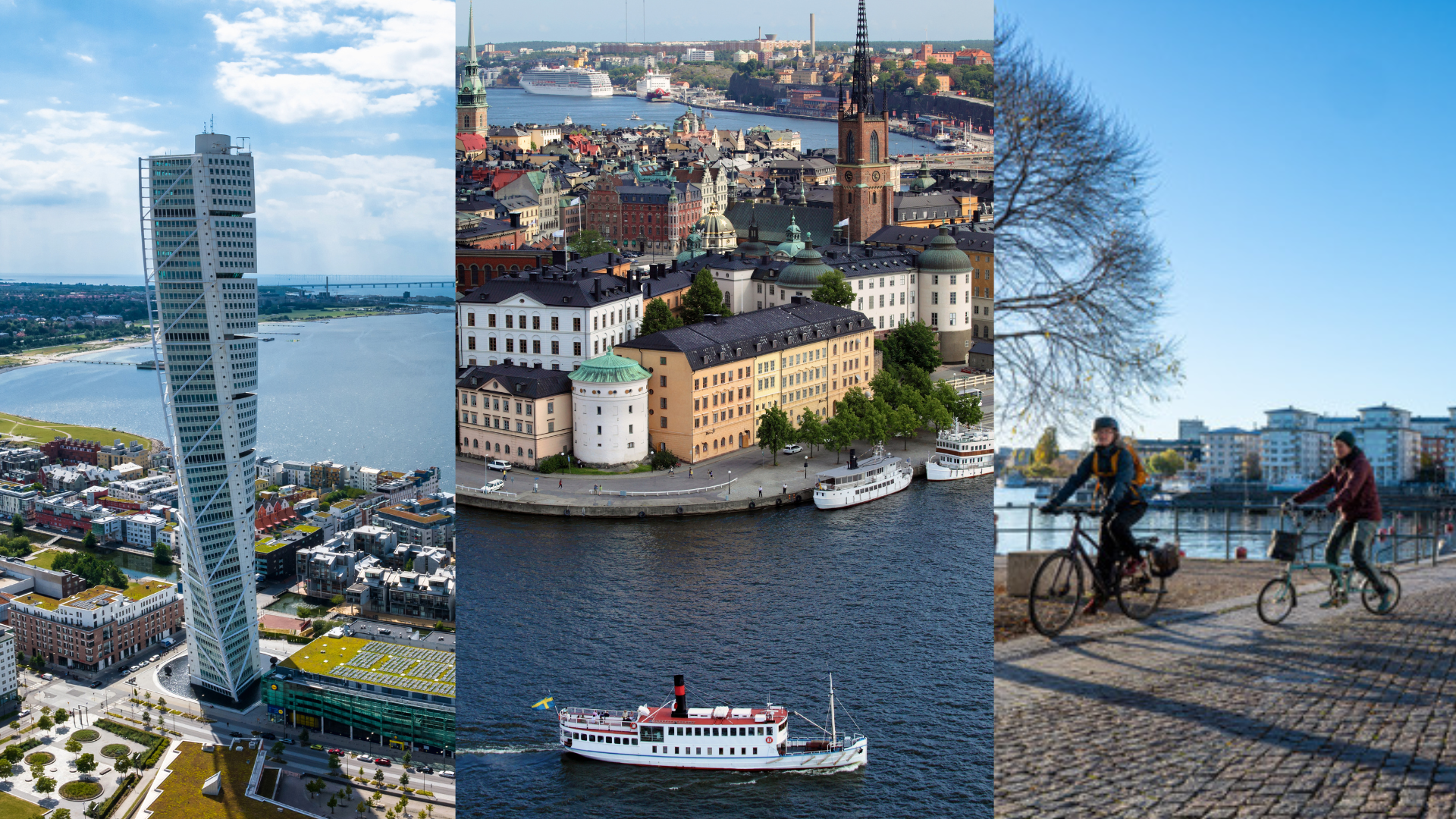Part 3 of 3 in the series "Navigating Climate Change" for Swiss Re

For this final article of the “Navigating Climate Change” series, based on the Swiss Re
Institute report “Changing Climate: The Heat Is (Still) On,” I will highlight one of its critical
themes: how to reduce climate change-related losses through collaboration between the
public and private sectors. This includes the essential roles of insurance and pension funds,
as well as innovative finance solutions that protect both infrastructure and natural resources.
Listen to this article - read by Sarah Christie.
To illustrate these ideas, let’s turn to the Nordic countries, where in 1896 Swedish scientist
and Nobel laureate Svante Arrhenius first proposed his greenhouse effect theory. In it, he
suggested that specific gases, such as carbon dioxide (CO2), could trap heat from the sun in
the Earth’s atmosphere. He also suggested that doubling the concentration of atmospheric
CO2 would increase surface temperatures by 4°C — a remarkably accurate prediction given
that today, almost 130 years later, the UN’s Intergovernmental Panel on Climate Change
(IPCC) still uses an equivalent estimate of 1.5°C to 4.5°C.

Arrhenius’ legacy also lives on in his native Sweden, which has led the fight against climate
change ever since. In 1991, it introduced one of the world’s first carbon taxes, a bold move
aimed at reducing emissions and promoting cleaner technologies. The country has also set
an ambitious target of net-zero greenhouse gas emissions by 2045, a goal that is not merely
an aspiration but a commitment enshrined in 2017’s legally binding Climate Act.
Various factors help explain this proactivity, from Sweden’s relatively small population and
efective governance to the high levels of education and income among voters. Like other
Nordic countries, the four pillars of its welfare state — trade unions, cooperatives, industry,
and government — are often able to work together for common good. This has, in turn,
fostered an approach to climate change that is both policy-led and market-driven.
This dovetailing of public and private interests is evident in the insurance market, which
comprises a solid mutual insurance sector and cooperative models that give members voting
rights and profit shares. Insurance companies often have a strong community focus,
supporting local initiatives and contributing to the social and economic development of the
regions they serve. Sweden’s unique insurance landscape prioritizes customer ownership
and innovation — so if members value sustainability and climate solutions, then insurers do
too.
The country’s strategy for financing its green agenda and promoting sustainable investments
has been similarly remarkable. And while its government was not the first to issue green
bonds, Sweden has been influential in shaping best practices and standards in a market that
is expected to be worth $1 trillion by the end of 2024.

Pioneering public and private collaboration
In 2015, the Swedish pension fund AP4 announced it was divesting from fossil fuels to align
its investments with its sustainability goals. It has since led efforts to redirect energy sector
investments via the Fossilfritt Sverige (or Fossil-Free Sweden) initiative, which has engaged
over 200 organizations.
AP4’s collaboration with the United Nations Environment Program (UNEP) has meanwhile
highlighted climate-related financial risks, resulting in the establishment of the Portfolio
Decarbonization Coalition. This initiative, which AP4 and UNEP co-founded with asset
manager Amundi and the non-profit Carbon Disclosure Project (CDP), focuses on partially or
fully divesting from high-carbon companies while prioritizing investments in low-carbon firms.
Other Swedish pension funds are now following AP4’s lead by prioritizing sustainable longterm investments.

Elsewhere, pensions and insurance group Folksam exemplifies how alignment between
insurers, pension funds, and municipal governments can produce meaningful commitments
to financing green innovation. A major player in the Swedish insurance market, Folksam
operates as a federation of regional customer-owned insurance companies, while also
owning the KPA Pension fund, the leading pensions company for the local government
sector. This structure brings the interests of diferent stakeholders together and facilitates
local, long-term and sustainable investments
Earlier this year, for instance, Folksam announced a 2.5-billion-krona (€222 million)
investment in a new climate adaptation bond issued by the City of Stockholm. Municipal
bonds are an excellent means to generate returns for pension fund customers while
contributing to sustainable development. Climate, green, and adaptation bonds have all
gained traction as financial tools enabling governments and businesses to finance the
transition to clean energy.

Another model helping Sweden meet its climate goals is that of Kommuninvest, a vast
cooperative owned by local municipalities and county councils. Ofering secure loans and
financing, the agency helps its members invest in infrastructure, services and community
development. By banding together, Kommuninvest’s members benefit from its strong credit
rating and can borrow at cheaper rates than would otherwise be possible. The cooperative’s
reputation helps reassure a private sector that is often concerned about the risks and low
returns of municipal- and regional-level investment.
In turn, Kommuninvest ensures that loans applications meet its environmental, social, and
governance (ESG) goals. Green bonds are among the main instruments it uses to fund
environmentally beneficial projects, from renewal energy projects to waste management. It’s
a model that demonstrates how local investment can be generated in times of limited,
competing, or constrained financing from central governments.

Lessons to Learn
Since it was founded in in 1986, Kommuninvest has gained attention from other Nordic
countries that have developed similar models. With the recent European Parliament
elections appearing to push political parties further from the Green Deal agenda,
government funding agencies like Kommuninvest may emerge in other parts of the continent
as countries seek new ways of raising much-needed investment for regional and local
projects.
The EU must fill an investment gap of over €400 billion if it is to meet its ambitious 2030
climate goals. Yet, green investment feels increasingly at risk at a time when heat waves and
floods pose growing threat to European cities, tourism and agriculture. (The continent’s wine
and olive oil producers are facing unprecedented pressures, while both Greece and Sicily
had to turn away tourists earlier this year due to a heat wave that threatened visitors and
residents alike).
Extreme weather events ignore borders and frontiers, and it is urgent to reflect on and adopt
proven models that focus on sustainability, adaptation, and mitigation. Perhaps a Swedish
approach, where the interests of different stakeholders align to focus on long-term stability
and sustainability rather than short-term profits, will serve as a beacon for other countries.

